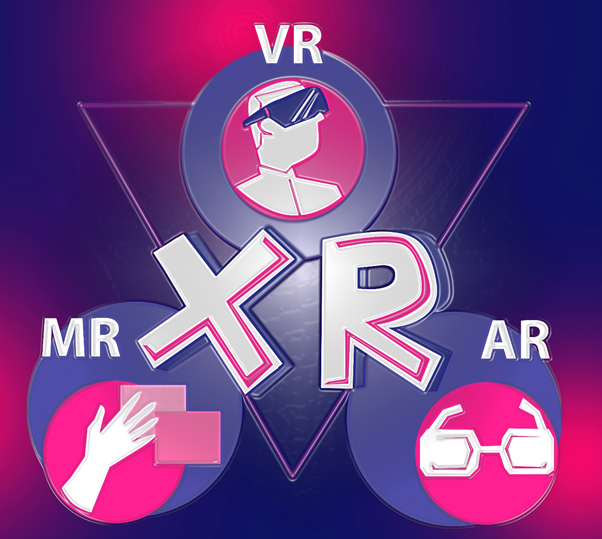What is Extended Reality?
Extended Reality (XR) refers to an umbrella terminology used for technology like Virtual Reality, Augmented Reality, Mixed Reality, and future immersive technologies which are yet to develop. Extended Reality incorporates a complete range of real as well as a virtual environment.

© Kalkine Group 2021
Overview of Virtual Reality, Mixed Reality, and Augmented Reality
Virtual Reality
Virtual Reality (VR) provides users with an interactive environment that mimics an entirely different reality than the one surrounding the user. To know more in detail, click here.
Augmented Reality
In Augmented Reality, virtual information, as well as objects, are superimposed on the real world. The experience improves the real world with digital details like images, text, & animation. The user can feel it via screens, smartphones, & tablets. Using AR technology, the users actually do not isolate themselves from the real world and still can interact and see the things going in front of them. Click here to understand the technology in detail.
Mixed Reality
In Mixed Reality, digital & real-world items happen together and can communicate with each other in real-time. Mixed Reality is an immersive technology and is also known as Hybrid Reality. In MR, the user needs an MR headset and more processing than Augmented Reality and Virtual Reality. An example of this is Microsoft’s Hololens. It allows users to place a digital object in a room and interact with the object in all possible manner.
History of Extended Reality
The history of Extended Reality started in 1960 when a computer scientist Ivan Sutherland created the first head-mounted display. With time, Myron Krueger in 1975 developed the video space that did not require headsets and gloves. The video space was created by combining projectors and video cameras to create a virtual environment.
In 1989, VPL Research made efforts to bring this technology to the end-users. With time, several changes were made, and the technology was made more user-friendly.
Real-World Applications of Extended Reality
Experts in the market believe that extended reality technology would grow exponentially. Let us look at five real-world applications of this technology:
Entertainment and Gaming
The entertainment & video games industries are the top users of this technology in the present times. In this industry, camera tracking and real-time execution are incorporated for creating an immersive virtual environment. Another use of this technology in this industry is in creating multipurpose studio environments. Thus, it helps to save the cost needed to establish an elaborate movie set.
XR provides comprehensive participation effect. Thus, it improves the ability of the video game.

Image Source: MegapixlTM
Employees and Customers
Extended Reality helps in training where employees can be trained in a low-risk, virtual environment. People like medical students, surgeons, firefighters, pilots etc., can be trained using this technology at minimum risk and low expense.
On the other hand, customers can be provided simulating virtual experience brought on by certain diseases, and impairments can support medical practioners and caretakers in empathy training.
Healthcare
XR application can help improve healthcare facilities by streamlining the medical procedures and also improving patient care. Through XR, Surgeons can visualize the complexity of organs in 3D. They can plan their surgery well in advance and perform surgeries in a safe, effective, and precise manner.
Real Estate
Through XR, the real estate agent or managers can provide their customers with a real feel of the property. The layout of the property can be enabled using the XR technology. Thus, in turn, provide them with better and strong business prospects.
Marketing
Marketers can provide their customers with an experience where they can try the product before using it.
Advantage and Disadvantage of Extended Reality
Advantages of Extended Reality
- XR technology gives businesses a chance to dive into a string of dynamic world and provide several benefits to them.
- It provides users with a possibility to observe the surrounding in an interactive and engaging manner. Thus, enabling businesses to train their staff in a better fashion.
- XR removes cyber boundaries and makes the accessibility of data seamless.
Disadvantages of Extended Reality
- XR allows deleting remoteness. However, in doing so, it increases the threat of compromised privacy. XR is prone to cyber-attack.
- The gadgets used in XR are quite expensive.
- Increased usage of XR can lead to headaches, nausea, and even eye disorders.
- XR provides new ways of amusement. However, its long-term usage can remove the necessity to communicate and lessen social engagement.
 Please wait processing your request...
Please wait processing your request...